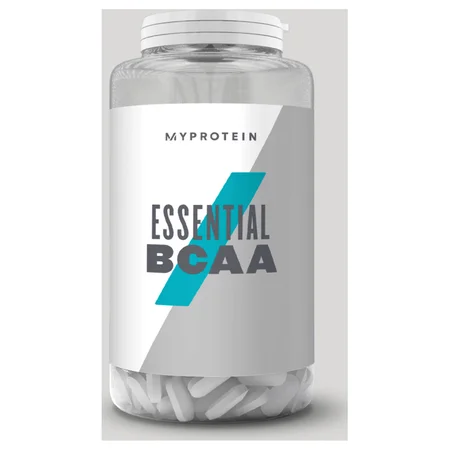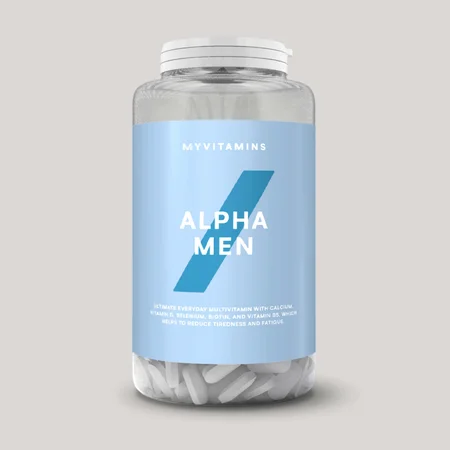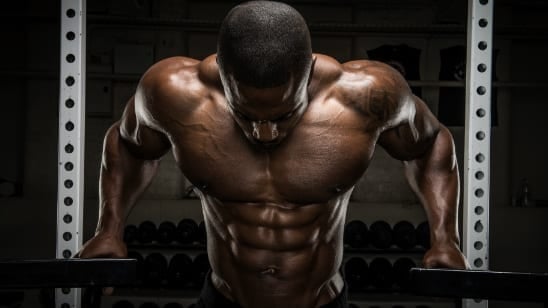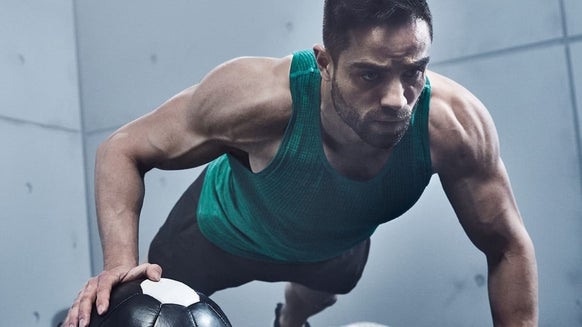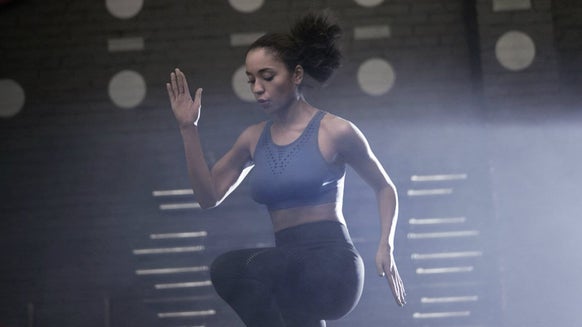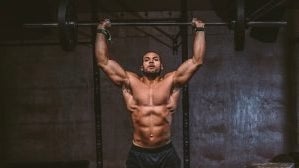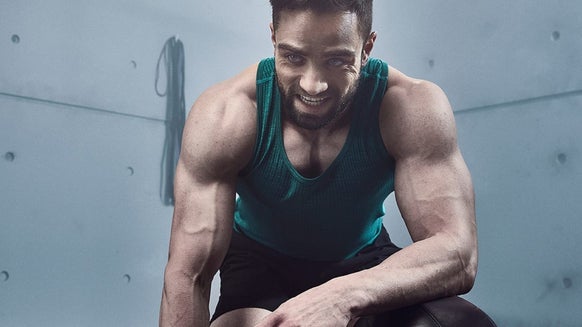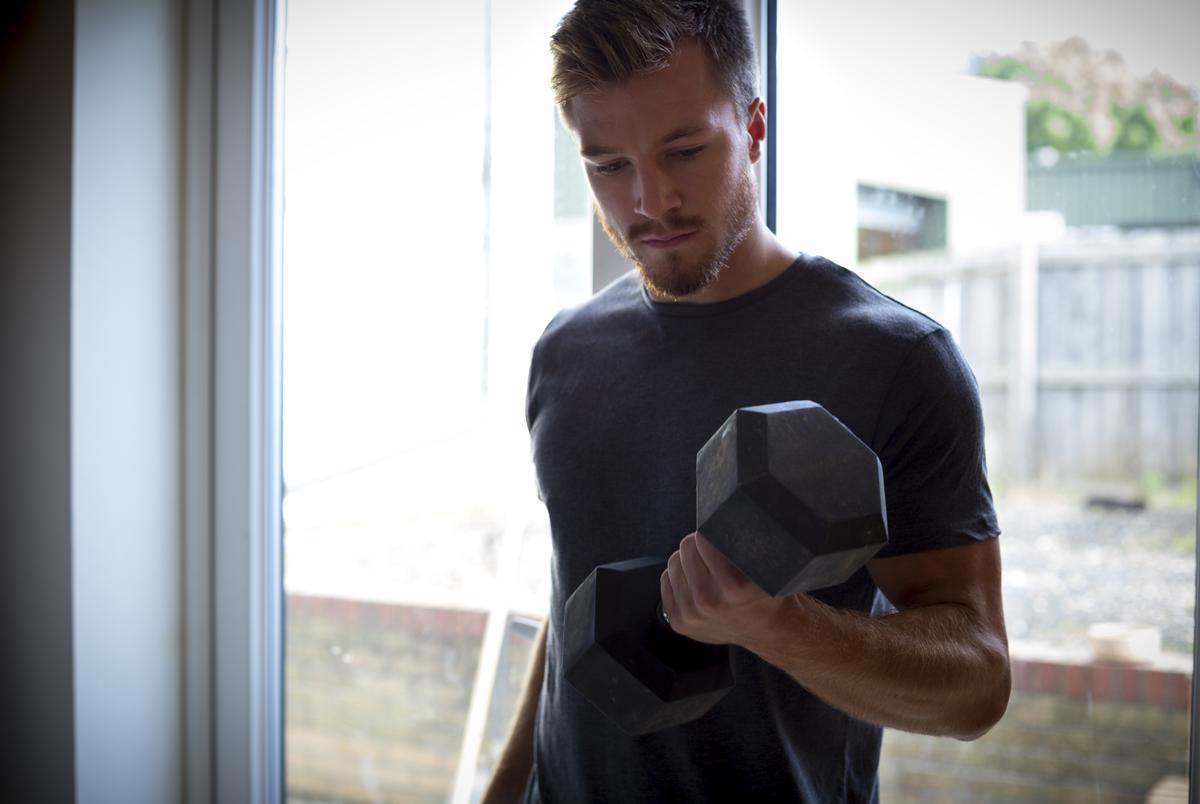
You might be finding strength training much more difficult than your usual gym workouts. Weight training relies on progressive overload to help build muscular strength. But, with little or equipment at home, it's going to put a stop to your gains, right? Wrong.
We're going to show how to workout at home when you can't make it to the gym.
Can Strength Training Be Done At Home?
Anyone, at any fitness level, can and should be doing strength training. That doesn't mean you have to spend hours at the gym to see results, as there are exercises you can do from the comfort of your own home.
Without access to those higher weights, we need to adapt the exercises and training to do this with little or no equipment at all. If you push your body to its limit, keeping your muscles under constant resistance, you'll see growth and gains in your muscular strength.
Can You Strength Train Without Weights?
You don't need complex equipment or the gym to start strength training — although the latter does help. Bodyweight training is one way to build muscular strength when you can't make it to the gym. Building muscle and getting stronger is all about placing the muscles under tension.
But, to make bodyweight training an effective method of strength training without weights, you have to progressively overload the muscles — like you would in the gym. Progressive overload involves gradually increasing the demands on the body to continue building muscle. Without progressive overload, your muscles have no reason to grow and adapt to handling heavier loads.
Tips for Progressive Overload at Home
Increase the time or reps of each exercise to make it more challenging. So you did 60 seconds or 12 reps last week? Try to add 5 extra seconds or reach 15 reps next time. - Add a weighted vest. Or, find yourself a backpack and add some resistance out of the cupboard.
- Make the exercise harder by adding supersets or even tri-sets.
Strength Training Without Weights
1. T-Press Up
We’ll take your standard push-up and build additional strength in the chest, shoulders, arms and core in one fluid movement. This move will work your core again and again, first by supporting the press-up motion and then by rotating your body. Better still, if you hold the T position then your core needs to work hard to keep you upright.
https://youtu.be/nZN6MBj_FOk
- Start with your hands and feet on the ground with your body in a straight line in a push-up position.
- Bending at the elbows lower your chest to the ground and then push yourself back up.
- Next, you're going to lift your left hand off the ground and rotate all your weight onto your right hand. Rotate until the side of your body is parallel with the floor. Feet should then rotate as well.
- Both arms should be extended so that your body resembles the form of a "T".
- Rotate your body back to push-up position.
2. The Alternating Shuffle Press-up
Now, if you want to challenge yourself, add this into your routine. This exercise adds an element of balance and stability to the regular push up, forcing you to engage your core more.
By using a stability ball or alternative object, you also allow your muscles to move through a wider range of motion. A great “all-in-one" movement working a wider range of the chest muscles than usual.
https://youtu.be/efzS8fXa_cw
- Maintain a press-up position with a straight spine and tensed core throughout the movement.
- On either side of the object, ensure the arms are the same distance apart and slightly wider than the shoulders.
- Shuffle feet accordingly to keep the body in line. Walk between the positions for an easier movement.
3. See Saw Plank
Let’s get those abs shaking, shoulders burning with the added benefit of firing up those lats. Throwdown a sweat towel, hold this for long enough and you’ll need one.
https://youtu.be/Ul4VUUUf-rQ
- Start with elbows under shoulders and legs extended with feet hip-width apart
- Slide your hands forward until your elbows are in line with your ears (this is your starting position)
- Keeping your abs engaged drag your body forward by pulling through your elbows, then shift your bodyweight back until elbows return to ear level
- Important to think about your back being the pulling force in this movement
4. Alternating Side Plank
The various range of plank exercises allow you to strengthen your body as a whole and not just the core but incorporating all three into one movement just ups the ante and more! Added tension through the movement which keeps the body steady just adds to the exercise and each body part involved.
https://youtu.be/42jgB13vK-s
- Start in a plank position with your feet shoulder-width apart.
- Simultaneously engage your core and shoulders to rotate your torso to the left.
- Return to the starting plank position and then switch to the right side.
- When rotating to the side, engage the shoulder of the supporting arm to lift the body up.
5. Prone Pull
Imagine doing a pull up without actually having to pull your body weight, sounds great right? Enter the Prone Pull! Now it doesn’t actually have the same impact as a pull-up but it will certainly keep some of those important back muscles engaged until you can revisit that pull up bar.
https://youtu.be/IiO7CSk8yfU
- Start laying down on your front with your arms over your head
- Lift your chest and arms a couple of inches from the floor
- In a slow and controlled manner pull your elbows down towards your hips focusing on pulling your shoulder blades back and down
- Ensure you fully extend your elbows when returning your arms overhead
6. Squat Jumps
The lower body is home to some of the biggest muscle groups we have. Training these will help stimulate great calorie-burning. Here, we will firm up those thighs, build up some glutes and push the heart rate through the roof!
https://youtu.be/jtkOPCjJTkc
- Start with your feet hip-width apart or slightly wider (whichever feels more comfortable)
- Squat so that your thighs are parallel with the floor or until you can’t squat any lower without bending at your lower back
- From the bottom of the squat stand with the greatest force, you can and drive your feet off the floor
- Lift your chest and keep your eyes pointing forwards
- On landing, bend your knees to absorb the impact and begin your next rep straight away
Strength Training With Weights
7. Arnold Dumbell Press
The Arnold Press is famous for being able to hit all three heads of the deltoids. And yes, it is named after Arnold himself, so you know it works.
https://youtu.be/P46UsPJyiFc
- Hold a dumbbell in each hand with your arms bent, as in the top of a biceps curl, so your palms are facing you
- Spread your arms out laterally, press your arms up and twist your hands so your palms face forwards.
- Finish by pushing your head forwards and reaching as high as you can so your biceps are close to your ears.
8. Bent-Over Row
The bent-over row is one of the big lifts and pivotal in your strength training program. Working primary muscles like the latissimus dorsi, rhomboids, spinal erectors, and trapezius muscles. They will also benefit the supporting muscles such as This can be done with dumbbells and a barbell.
https://youtu.be/JKCNdlIoPIo
- Hold a barbell with a pronated grip (palms facing down). Your feet should be shoulder-width apart.
- Bend your knees and bring your torso forward slightly. Your back should be straight and almost parallel to the floor. This is your starting position.
- Lift the barbell up towards your sternum, keeping your elbows tucked in and close to the body.
- Pause and hold at the top of the movement, squeezing your back muscles.
- Slowly lower the barbell back to the starting position.
- Repeat for the desired amount of reps.
9. Dumbbell Chest Press
Using dumbbells allows a greater range of motion than using a barbell and this, in turn, means you can work more of the pec muscles during the exercise. Your pecs are the main muscles targeted by the exercise, but as a bonus, it also works your triceps.
Opting for dumbbells also trains each side in isolation, so you can’t rely on a stronger side to muscle up the weight like you can when using a barbell. If you do find that one side is struggling when using dumbbells, you can then focus on building your strength on that side to balance your body.
https://youtu.be/05vJMqToevY
- Lie on the bench with a dumbbell in each hand and your feet flat on the floor. You can rest your feet up on the bench if it’s more comfortable.
- Push the dumbbells up so that your arms are directly over your shoulders and your palms are up. Ensure your forearms and wrist are parallel for comfort and support.
- Keep your head resting throughout.
10. Kettlebell Single-Leg Deadlift
The single-leg deadlift is an advanced movement that will challenge your foot, hip and torso stability while developing posterior strength. One foot stays planted on the ground while the other raises into the air.
https://youtu.be/GU3erqKAHRQ
- Grab your kettlebell by the handle, with one hand, while standing on one leg (the same side that you hold the kettlebell).
- Keep your knee slightly bent and perform a stiff-legged deadlift by bending at your hip. Extend your opposite leg behind you for stability.
- Lower the kettlebell until you are parallel to the floor. Return to the upright position
11. Bulgarian Split Squat
The barbell Bulgarian split squat is a single-leg exercise that targets the quads, glutes, and hamstrings. If your balance is an issue, try holding dumbbells at your side instead.
https://youtu.be/SAJgnwXoiFI
- Stand facing away from a bench, chair, or solid surface holding a barbell across your upper back.
- Start with one leg resting on the bench behind you.
- Perform a squat with your standing leg until the knee of your trailing leg almost touches the floor.
- Push up and return to the start position.
12. Kettlebell Squat
The kettlebell squat helps strengthen your lower body with a focus on the quads, hamstrings, and glutes. The exercise also improves posture and mobility.
https://youtu.be/w70Cf2WF8Rk
- Grab the handle of the kettlebell with both hands in an overhand grip.
- Stand tall with the feet about shoulder-width apart and toes pointed outward. You can hold the kettlebell down by your legs or in front of your chest.
- Lower yourself into a squat position until your thighs are parallel with the floor. Touch the floor with the kettlebell, or keep the kettlebell stable and in front of your chest (depending on your starting position).
- Drive your hips and knees upward to return to the starting position.
Your Questions Answered: Strength Training FAQs
How Often Should I Be Strength Training?
Training 2-3 times a week is a great starting point. If you hit a point that you feel you are not progressing, try adding another session.
Strength training does require rest, in order to allow your body to recover, but you should try to hit each muscle group twice a week for optimum strength gain, especially when you're training from home.
How Many Reps Do I Need To Build Muscle?
There is a common belief that lower reps and more sets contribute to strength gaining, but that's only if you have access to heavier weights — which isn't always the case at home.
When training at home, with little or no equipment, you should be focusing on progressively overloading the muscles with a lighter weight than you usually would in the gym. Here you could try completely each set to failure and monitor your progress by the number of reps you can complete session by session.
Do Sit-ups and Push-ups Count As Strength Training?
As long as you stick to the progressive overload principle then yes. Press-ups work the triceps, pecs, and shoulders and when done with the right form, they can also strengthen the lower back and core by engaging the abs.
Sit-ups have many strengthening benefits including improved posture, reduced back injuries and pain as well as strengthening your core.
What do I need to start strength training at home?
There are endless exercises you can do from the comfort of your own home with or without equipment. If you have your own home gym or equipment, then you're in a great position, but it's not be-all and end-all. As we've said, bodyweight training is one way to build muscular strength when you can't make it to the gym.
Kettlebells are excellent, and sometimes an underrated piece of equipment, while dumbbell and barbells will make you feel like your back in the gym. You can also make your own equipment with the things in your house. If you have a backpack, you can add weight and use it as a makeshift weighted vest. Sometimes, climbing the stairs with this mounted to your back is likely to burn some added calories and improve your leg strength.
Take Home Message:

